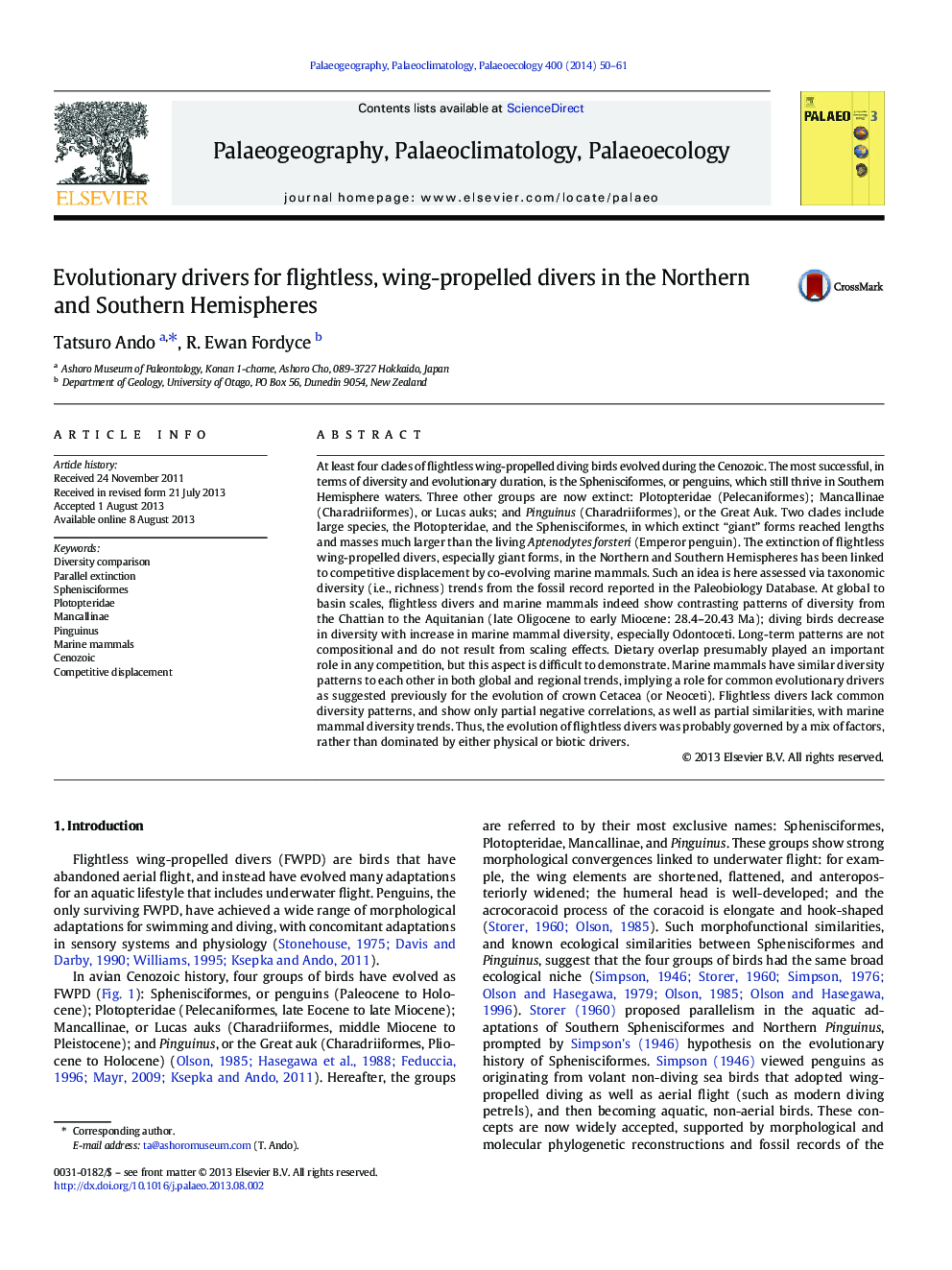| کد مقاله | کد نشریه | سال انتشار | مقاله انگلیسی | نسخه تمام متن |
|---|---|---|---|---|
| 4466254 | 1622190 | 2014 | 12 صفحه PDF | دانلود رایگان |
• Did flightless diving birds go extinct because of competition from marine mammals?
• We compared the spatio-temporal diversity of those taxa globally and regionally.
• Marine mammals show similar patterns in different regions, but those sea birds do not.
• Plotopteridae and penguins were possibly affected by competition from Odontoceti.
• Overall patterns of flightless diving birds reflect both biotic and abiotic drivers.
At least four clades of flightless wing-propelled diving birds evolved during the Cenozoic. The most successful, in terms of diversity and evolutionary duration, is the Sphenisciformes, or penguins, which still thrive in Southern Hemisphere waters. Three other groups are now extinct: Plotopteridae (Pelecaniformes); Mancallinae (Charadriiformes), or Lucas auks; and Pinguinus (Charadriiformes), or the Great Auk. Two clades include large species, the Plotopteridae, and the Sphenisciformes, in which extinct “giant” forms reached lengths and masses much larger than the living Aptenodytes forsteri (Emperor penguin). The extinction of flightless wing-propelled divers, especially giant forms, in the Northern and Southern Hemispheres has been linked to competitive displacement by co-evolving marine mammals. Such an idea is here assessed via taxonomic diversity (i.e., richness) trends from the fossil record reported in the Paleobiology Database. At global to basin scales, flightless divers and marine mammals indeed show contrasting patterns of diversity from the Chattian to the Aquitanian (late Oligocene to early Miocene: 28.4–20.43 Ma); diving birds decrease in diversity with increase in marine mammal diversity, especially Odontoceti. Long-term patterns are not compositional and do not result from scaling effects. Dietary overlap presumably played an important role in any competition, but this aspect is difficult to demonstrate. Marine mammals have similar diversity patterns to each other in both global and regional trends, implying a role for common evolutionary drivers as suggested previously for the evolution of crown Cetacea (or Neoceti). Flightless divers lack common diversity patterns, and show only partial negative correlations, as well as partial similarities, with marine mammal diversity trends. Thus, the evolution of flightless divers was probably governed by a mix of factors, rather than dominated by either physical or biotic drivers.
Journal: Palaeogeography, Palaeoclimatology, Palaeoecology - Volume 400, 15 April 2014, Pages 50–61
